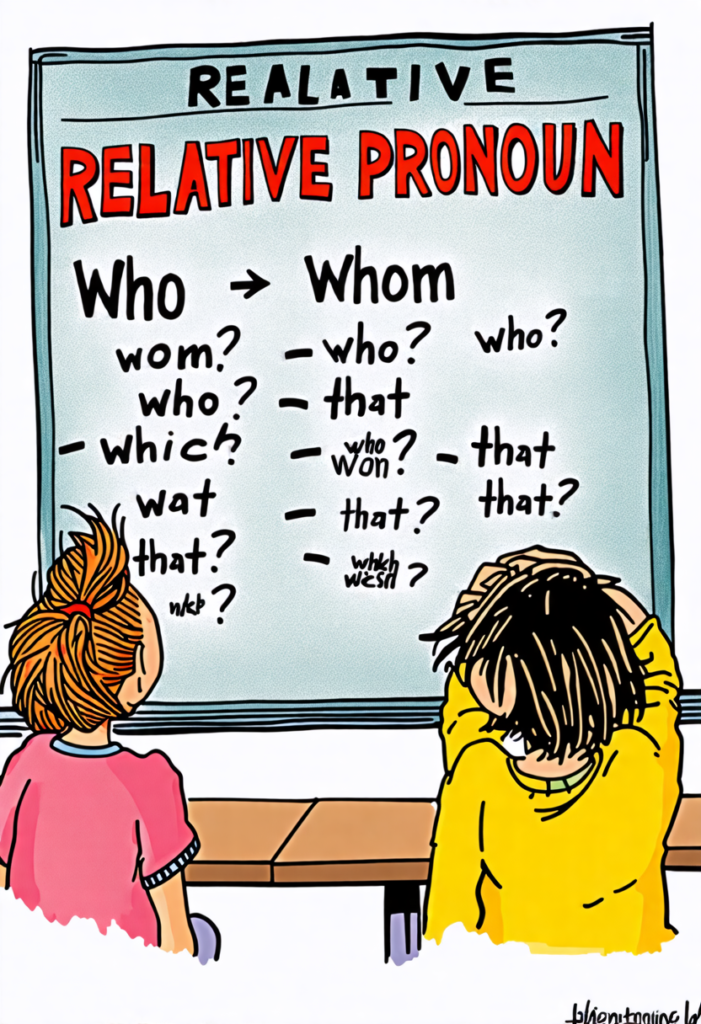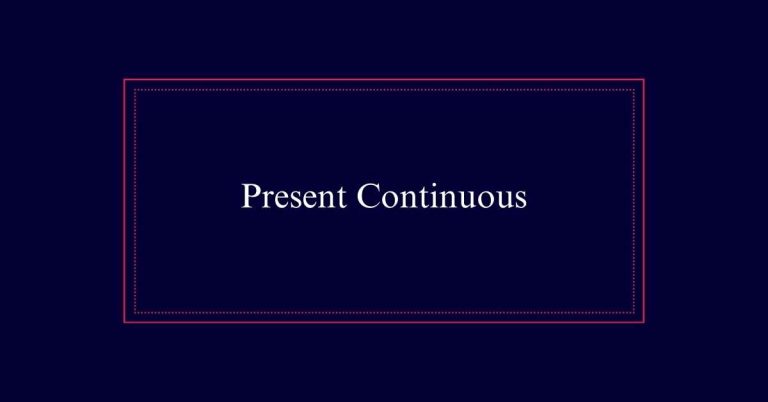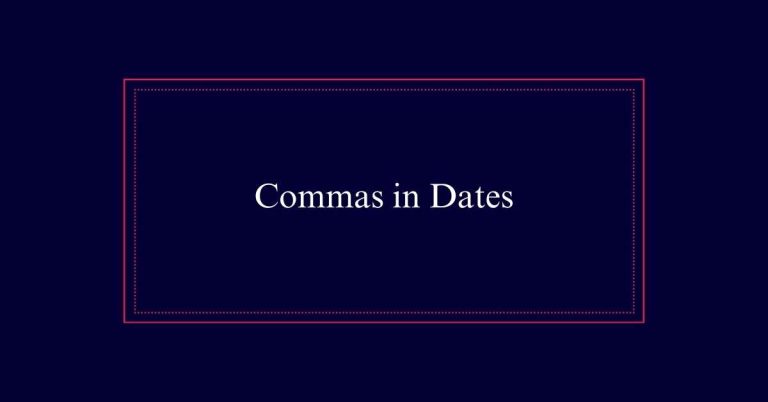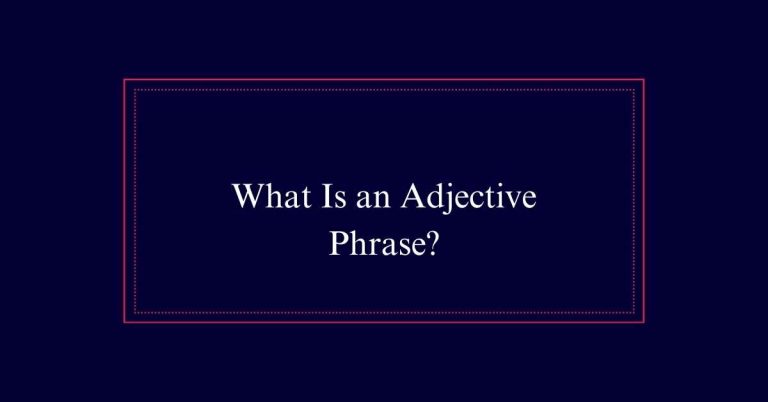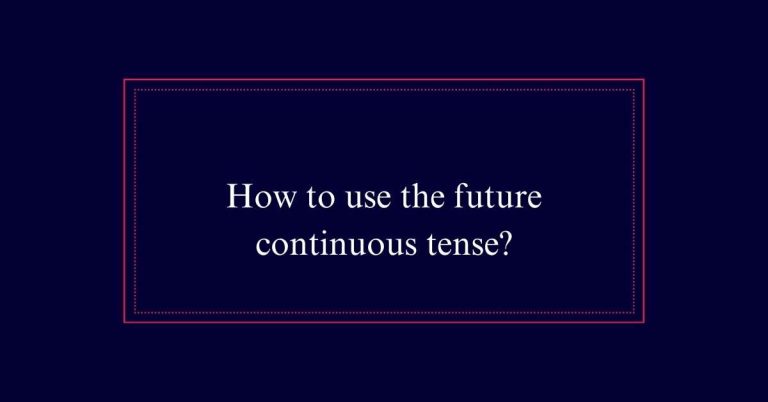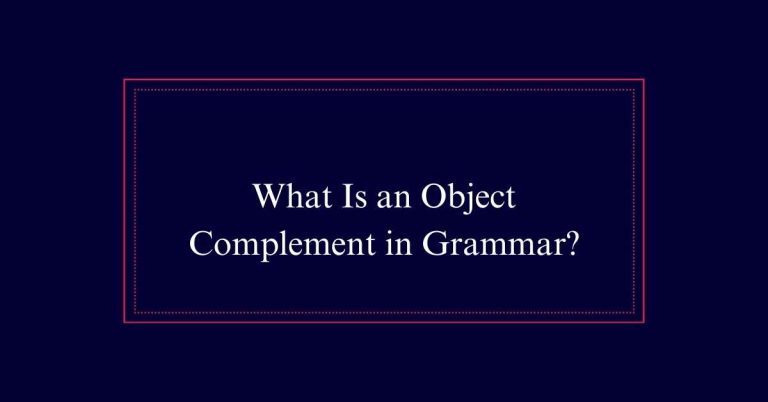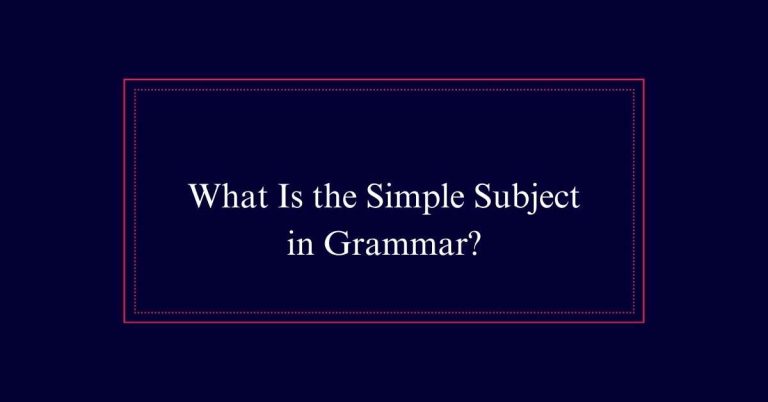What Is a Relative Pronoun? How does it work?
A relative pronoun connects a clause or phrase to a noun or pronoun, providing additional information about that noun or pronoun. Common relative pronouns include ‘who,’ ‘whom,’ ‘which,’ ‘what,’ and ‘that.’ For instance, ‘who’ and ‘whom’ refer to people, while ‘which’ and ‘that’ refer to animals or things. The pronoun ‘whose’ indicates possession. Relative pronouns help create complex sentences by avoiding repetition and ensuring coherence. They play an essential role in English grammar for clarity and detail.
Definition of Relative Pronouns
What exactly are relative pronouns?
Relative pronouns are words that connect clauses or phrases to a noun or pronoun. They provide more information about the noun or pronoun they refer to. These words help to create complex sentences that are clear and detailed. By using relative pronouns, writers can avoid repetition and make their writing smoother.
For instance, in the sentence ‘The book that you lent me was fascinating,’ ‘that’ is a relative pronoun linking the clause ‘you lent me’ to ‘The book.’ Without relative pronouns, sentences would be disjointed and less informative. They play an essential role in ensuring sentences are coherent and connected, enhancing the overall quality of writing.
List of Relative Pronouns
Relative pronouns are essential tools in English grammar, each serving a distinct purpose in connecting clauses to nouns. They include “who,” “whom,” “which,” “what,” and “that.” These pronouns can refer to people, animals, or things. Additionally, “whose” serves as a possessive form of “who” and “which.” Compound relative pronouns like “whoever,” “whomever,” “whichever,” and “whatever” add flexibility.
| Pronoun | Refers To | Example |
|---|---|---|
| Who | Person (subject) | The teacher who gives homework is kind. |
| Which | Animal or thing | The book which you borrowed is on the table. |
| That | Person, animal, or thing | The car that won the race is red. |
Who and Whom Usage
Understanding the correct usage of ‘who’ and ‘whom’ is essential for mastering English grammar.
‘Who’ acts as the subject of a verb. For example, ‘She is the one who won the award.’ In this sentence, ‘who’ is the subject performing the action of winning.
On the other hand, ‘whom’ serves as the object of a verb or preposition. For example, ‘To whom did you give the book?’ Here, ‘whom’ is the object of the preposition ‘to’.
A useful tip is to substitute ‘he’ or ‘him’. If ‘he’ fits, use ‘who’; if ‘him’ fits, use ‘whom’.
Mastery of these distinctions contributes significantly to clear and correct communication.
Which and What Usage
As we turn our focus to ‘which’ and ‘what’, it’s important to understand their distinct roles in referring to animals, things, and nonliving entities.
‘Which’ is used to refer to animals or things and usually introduces nonrestrictive clauses. For example: ‘The car, which is red, belongs to John.’ Here, ‘which’ provides additional information.
On the other hand, ‘what’ refers to nonliving things and is often used in questions or exclamatory sentences. For example: ‘What did you find?’ or ‘What a beautiful painting!’
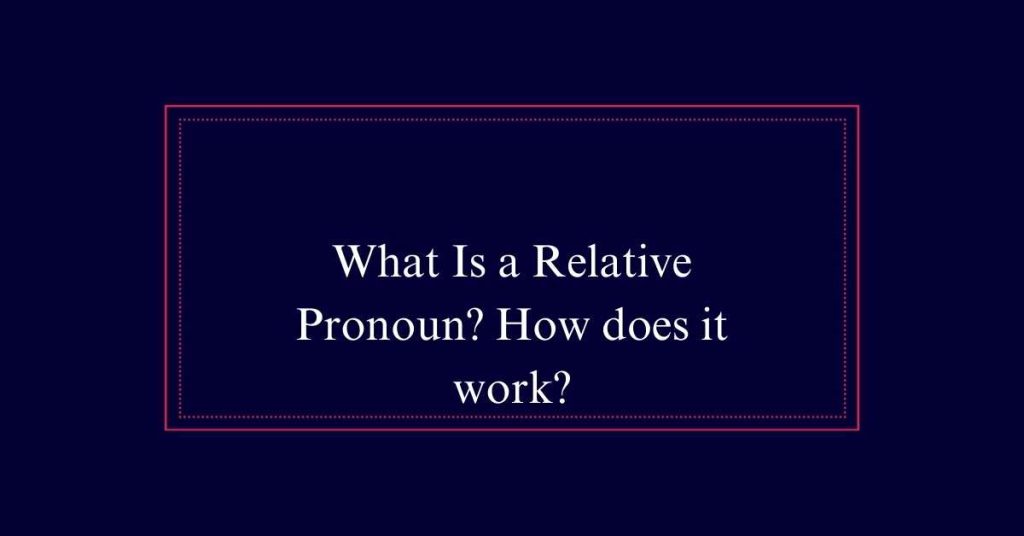
Using ‘That’ Correctly
‘That’ is a versatile relative pronoun often used to introduce restrictive clauses, essential for defining the noun it follows. Unlike nonrestrictive clauses, restrictive clauses provide vital information needed to understand the sentence.
Here are some key points to remember when using ‘that’:
- ‘That’ is used for people, animals, and things.
- It should not be set off with commas.
- ‘That’ introduces information essential to the meaning of the sentence.
- Use ‘that’ to specify which one or which kind.
- Avoid using ‘that’ after prepositions.
Example: ‘The book that you lent me was fascinating.’ In this case, ‘that’ introduces a clause crucial to identifying which book is being discussed.
Possessive Relative Pronouns
Shifting focus from restrictive clauses, let’s explore possessive relative pronouns and their unique roles in sentences.
Possessive relative pronouns, primarily ‘whose,‘ link a noun to a possessive form. They indicate ownership or association. For example, in ‘She apologized to the boy whose glasses got broken,’ ‘whose’ connects the boy to the glasses.
Though ‘whose’ traditionally refers to people, it is also used for nonhumans. Consider, ‘The house whose owner is on vacation has an unsightly garden.’ This usage is long-standing and accepted.
Alternatively, ‘The house, the owner of which is on vacation, has an unsightly garden,’ employs a more formal structure.
Compound Relative Pronouns
Compound relative pronouns add flexibility and specificity to sentences by combining pronouns with -ever suffixes. Examples include whoever, whomever, whichever, and whatever. These pronouns can refer to people, objects, or situations, making them highly versatile in various contexts. They are particularly useful when the identity of the person or thing is unknown or unimportant.
Compound relative pronouns enhance clarity and precision in communication.
- Whoever: ‘Please tell whoever may call that I am not available.
- Whomever: ‘Whomever you hire will be fine with me.’
- Whichever: ‘Whichever train you take, you will end at Charing Cross station.’
- Whatever: ‘Carly will be successful at whatever she chooses to do in life.’
- Whoever: ‘Whoever wins the contest will receive a prize.’
Restrictive Vs. Nonrestrictive Clauses
Understanding how compound relative pronouns enhance sentence clarity leads us to another important topic: the distinction between restrictive and nonrestrictive clauses.
Restrictive clauses provide essential information about the noun they modify. Without them, the sentence meaning changes. For example, ‘The car that is parked outside is mine’ specifies which car is being referred to.
Nonrestrictive clauses, on the other hand, add extra information that can be omitted without altering the sentence’s basic meaning. They are usually set off by commas. For instance, ‘My car, which is parked outside, is red’ adds additional details about the car but does not change the main point.
That Vs. Which
In English grammar, distinguishing between ‘that’ and ‘which’ is crucial for constructing clear and accurate sentences. ‘That’ introduces restrictive clauses, which provide essential information to the meaning of a sentence.
On the other hand, ‘which’ introduces nonrestrictive clauses, adding extra information that can be omitted without altering the sentence’s core meaning. Nonrestrictive clauses are usually set off by commas.
Here are key points to remember:
- Use ‘that’ for essential information.
- Use ‘which’ for additional, non-essential details.
- Restrictive clauses do not require commas.
- Nonrestrictive clauses are set off by commas.
- Incorrect usage can lead to confusion or ambiguity.
Who Vs. That
Just as understanding ‘that’ and ‘which’ is important for clarity, distinguishing between ‘who’ and ‘that’ is equally significant.
‘Who’ is used exclusively to refer to people, emphasizing their role as individuals. For example, ‘The teacher who gives out candy is always the students’ favorite.’
On the other hand, ‘that’ can refer to people, animals, or things but is less personal. While some style guides accept ‘that’ for people, it is safer and more precise to use ‘who’ when referring to individuals.
For instance, ‘The author who wrote the book attended the event’ is preferable to ‘The author that wrote the book attended the event.’
Frequently Asked Questions
How Do Relative Pronouns Function in Complex Sentences?
Relative pronouns connect clauses, providing more information about a noun. They introduce relative clauses, specifying or elaborating on the noun. Examples include “who,” “whom,” “which,” “that,” and “whose,” each serving different roles in sentences.
Can Relative Pronouns Be Used to Connect Independent Clauses?
Relative pronouns typically connect dependent clauses to independent clauses, not two independent clauses. For connecting independent clauses, conjunctions like ‘and’ or ‘but’ are used instead. Therefore, relative pronouns are not suitable for this purpose.
Are Relative Pronouns Ever Omitted in Sentences?
Relative pronouns can be omitted in sentences when they are the object of the clause. For example, “The book (that) I read was fascinating.” Here, “that” is implied and can be left out.
Do Relative Pronouns Change Form Based on Tense?
Relative pronouns do not change form based on tense. Instead, they remain constant regardless of the verb tense used in the sentence. Their primary function is to connect clauses and provide additional information.
How Do Relative Pronouns Interact With Prepositions?
Relative pronouns can follow prepositions to form prepositional phrases, altering the sentence’s structure. For example, “The person to whom you spoke” or “The book on which she relies.” Prepositions often precede “whom” and “which.”
